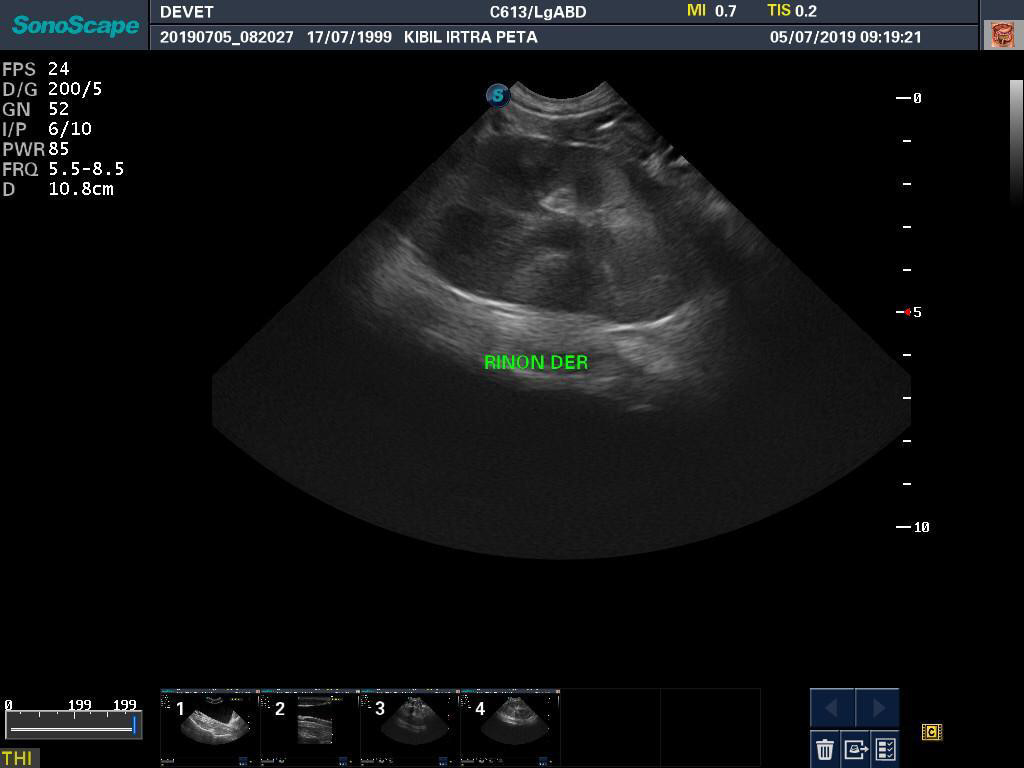Barrueta-Acevedo, F.M.
Introduction
Chronic kidney disease (CKD) is well described in captive big cats. It is often linked to a protein-energy wasting syndrome, called uraemic anorexia-cachexia syndrome, due to a decrease in nutrient intake, catabolic state, systemic inflammation and metabolic changes. Anorexia is one of the factors that contribute to malnutrition among patients undergoing dialysis. Insufficient food intake is the main cause of uraemic malnutrition, which is characterised by weight and muscle mass loss. Apart from its impact on nutrition, anorexia is itself an independent risk factor for morbidity and mortality. Its pathogenesis is unknown. Inflammatory cytokines, deregulation of hormones and neuropeptides that control appetite, retention of medium molecular weight molecules, and alterations in amino acid concentrations seem involved.
Megestrol Acetate
Steroids, progestogens, and serotonin agonists have been used to stimulate appetite in various clinical situations. Of all substances with orexigenic effects, the best known in humans is megestrol acetate. It is a synthetic progestin that has been widely used in humans to improve appetite and to increase weight in cancer, HIV or related conditions patients. However, its use for these purposes has been rarely reported in zoological medicine, where it is usually used as a contraceptive method. There are only a few reports as orexigenic agent in primates and dolphins.
Clinical history
The specimen was a geriatric male jaguar (20 years old), with a history of hyporexia for more than three months, diarrhea of 10 days, and anorexia for at least five days. The keepers in that place refered the diarrhea was treated with enrofloxacin at 300mg once a day during the 10 days that this lasted with no improvement.
Enclosure and facilities
The enclosure and other facilities were dirty, including the freezer. Microbiological samples of meat and kitchen surfaces were taken. The meat was highly contaminated, not suitable for consumption.
Physical examination
The physical exam showed a body condition score of 1.5/5 and a weight of 32.1Kg. There is a popular belief that this degree of thinness is a normal condition in old animals, so the keepers assumed that “the jaguar was skinny because it was old”. The jaguar was transferred to our zoo in order to do more medical studies and provide better care and quality of life.
Medical sampling
In order to make a general evaluation of the patient, blood and urine samples were taken. As it can see in the photograph, the urine sample belonging to the specimen identified as "Kibil" shows important macroscopic abnormalities, being observed diluted despite the dehydration condition that the animal was experiencig.
Laboratory results
Laboratory results showed an increase in blood urea nitrogen (96.7mg/dL) and creatinine (7.4mg/dL), as well as the presence of glucose (1,000mg/dL), protein (1,000mg/dL), ketones (trace) and blood (trace), and a significant reduction in the specific gravity of urine (<1.010). Symmetric dimethylarginine was elevated (20mcg/dL).
Renal echography
A renal echography was performed to search for possible causes of kidney failure, such as stones, cyst, hydronephrosis, or infections. The study showed a decrease in the corticomedullary differentiation of both kidneys, which corroborates a process of glomerulonephritis and significant renal failure.
Treatment
The patient was hydrated alternating Hartman´s solution and 5% dextrose in normal saline. Ciproheptadine was given for two days with no changes at all, then, megestrol acetate was instaured at 40 mg daily in a single dose, subsecuently adjusted to the lowest effective dose, which was 20mg once a day. Dietary protein was reduced by changing the type of meat offered, reducing horse meat and increasing chicken meat. Fatty acids and calcium supplements were administered orally with the diet.
Improvement
On the second day of treatment with Megestrol Acetate, the animal was eating with a better appetite, and eight weeks after starting it, the animal had achieved a body condition score of 3/5 and 57Kg of weight. The creatinine (4.6mg/dL) and blood urea nitrogen (67mg/dL) had slightly decreased.
Conclusions
Megestrol Acetate could improve appetite and weight increase in jaguars whit uraemic anorexia-cachexia syndrome. It could also improve the quality of life of geriatric patients with anorexia of different origins.
Recommendations
-Prevention. Preventive medicine will always be the best option. Less impaired patients will have better chances of recovery.
-Diagnostic. Oportune and concrete diagnosis will allow more specific treatments, with a greater probability of success.
-Treat patients. The patient is not an organ or a system separate from the rest of the body, so it must be treated as a complete living being, with interdependent systems. Treatment must be adapted to each patient, according to available resources, always providing the best possible quality of life.
The treatment does not exist?
The therapeutic opportunities of the patient should not be limited because there are no reports of a specific treatment for this species. This does not mean that we should just venture out, but that we should inform ourselves and prepare as much as possible before trying a new treatment and assess its risks.
The most important thing
Because they are the ones who know the animals and their care best, they are our eyes and ears. There must be good communication at all times. An oportune diagnosis and successful treatment depends largely on good teamwork.













